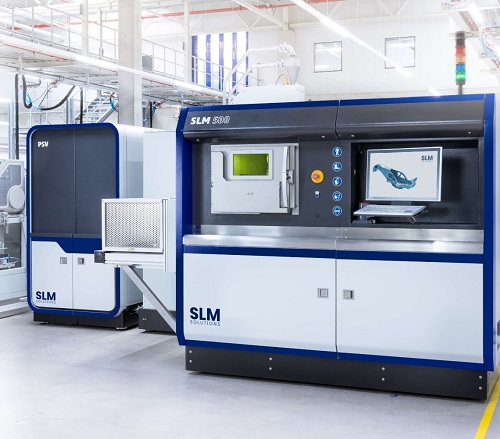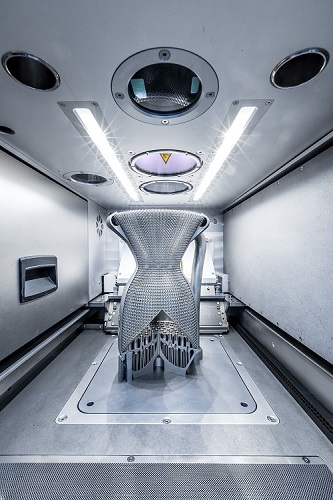Nikon’s acquisition of SLM Solutions in 2023 marked a significant change for both. With this move, SLM Solutions, originally a German company listed locally in the Electronic Trading (ETR) system, joined Nikon’s business portfolio as part of its new Advanced Manufacturing Business unit, established in April 2023. This addition brought SLM Solutions into collaboration with Morf3D, another 3D printing business previously acquired by Nikon and also part of the business unit, to bolster its digital manufacturing front.
Since becoming part of Nikon, SLM Solutions has had a year of ups and downs as it adapted to its new role within a larger corporate structure and aligned its 3D printing technologies with Nikon’s strategic goals in digital manufacturing.
Since the start of the 2024 Japanese fiscal year in April 2023, the newly integrated Nikon SLM Solutions has navigated through its initial months with a mix of wins and challenges. The company has been putting money into research and new technologies but is also dealing with the costs of merging with Nikon.
The immediate aftermath of the acquisition saw an increase in revenue, which was attributed partly to SLM Solutions. For the period ending June 30, 2023, the Advanced Manufacturing Business saw an expansion of the metal additive manufacturing (AM) market. It was clear that the unit was growing. To further streamline its operations and boost its digital manufacturing, Nikon merged the Advanced Manufacturing Business unit with the Industrial Metrology Business unit into a newly formed segment called the Digital Manufacturing Business. This reorganization is designed to merge various technologies and units under one umbrella, improving innovation and transparency in financial reporting within this key strategic area.

For the first quarter of the financial year, Nikon’s Digital Manufacturing Business reported ¥11.9 billion ($80.3 million), then ¥14.2 billion ($95.8 million) for the second quarter, and ¥14.8 billion ($99.8 million) for the third quarter, which ended on December 31, 2023 and was revealed on February 8, 2024. When we look at Nikon’s total corporate revenue for the same periods—¥158.1 billion ($1 billion) for Q1, ¥173.1 billion ($1.2 billion) for Q2, and ¥197.7 billion ($1.3 billion) for Q3—it’s evident that the Digital Manufacturing Business, though just a part of Nikon’s wide-ranging operations, is showing a promising upward trend. Also, while SLM Solutions represents only a portion of the Digital Manufacturing Business, its contribution is significant enough to reflect the overall growth direction of this segment.
However, despite this increase in sales, the segment also saw its deficit grow throughout the three quarters. According to the company’s first and second-quarter reports, while the business unit recorded an increase in revenue as a result of making Nikon SLM Solutions a consolidated subsidiary, the business deficit increased because of one-time costs associated with the launch of a business unit, amortization of intangible assets acquired through making SLM a consolidated subsidiary, and up-front investments in R&D and other activities.
The initial quarters post-acquisition revealed a mixed bag — increased revenues across several business segments, including the Digital Manufacturing Business, thanks to SLM Solutions. Yet, the bottom line was affected by operating losses, primarily due to SLM’s operating deficits and amortization costs. A particularly interesting point was the cash flow of the operating activities, which, despite the challenges, remained positive. Nikon’s ability to keep generating cash from operations is the strength of its diversified business model, even while spending money to integrate SLM Solutions into its operations.

Looking ahead, Nikon’s forecast remained cautiously optimistic. The revenue projections for the Digital Manufacturing Business were promising, thanks to the full-year contribution expected from SLM Solutions. However, operating profits were anticipated to be lower, reflecting the ongoing costs of integration, upfront investments, and the challenges of integrating SLM Solutions into the broader Nikon enterprise.
When Nikon released its third quarter results, it anticipated that in the Digital Manufacturing Business, capital investments would “remain sluggish,” especially in the electric vehicle (EV) and automotive battery markets—which can benefit from SLM’s technology since it particularly well-suited for producing complex and lightweight metal parts.
“While demand for larger, more productive printers in the Advanced Manufacturing Business is expected to grow, the metal additive manufacturing market as a whole is expected to remain in the phase of leveling off,” forecasts the company.
As Nikon continues to navigate through the integration of SLM Solutions, the focus remains on leveraging the full potential of its acquisition. This integration of SLM Solutions under the Nikon umbrella is a great example of the complexity surrounding acquisition-led growth. The future of Nikon SLM Solutions will undoubtedly be amid strategic decisions, financial adjustments, and the need for continued innovation.
The journey of SLM Solutions under Nikon’s umbrella exemplifies the complex dance of acquisition-led growth — a tale of strategic decisions, financial adjustments, and the continuous pursuit of innovation. As we look to the future, integrating SLM Solutions into Nikon’s fabric will undoubtedly be a saga of financial maneuvering, strategic investments, and the relentless pursuit of digital manufacturing excellence.
Join us at TCT Asia, connect with industry innovators as you explore the entire AM ecosystem including design, materials, hardware, software, post-processing, and quality. 10,000+ professionals will unite to hear about the latest trends, explore the latest immersive AM technologies and find solutions to their AM challenges. Make sure you are there too.

TCT ASIA 2024
Tuesday 7th May 09:00 - 17:30
Wednesday 8th May 09:00 - 17:30
Thursday 9th May 09:00 - 15:00
NECC(Shanghai)7.1&8.1H